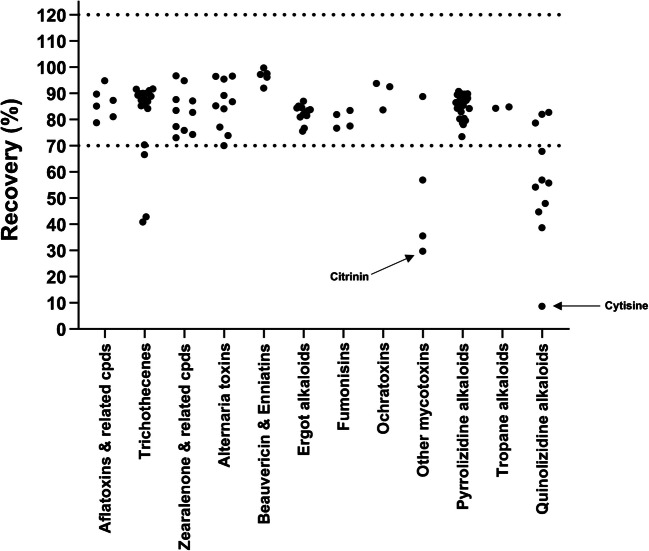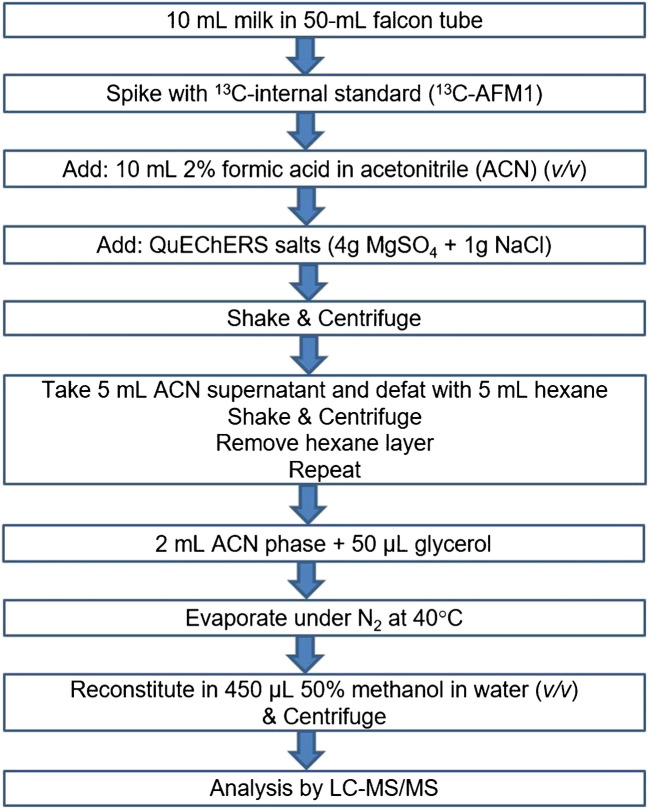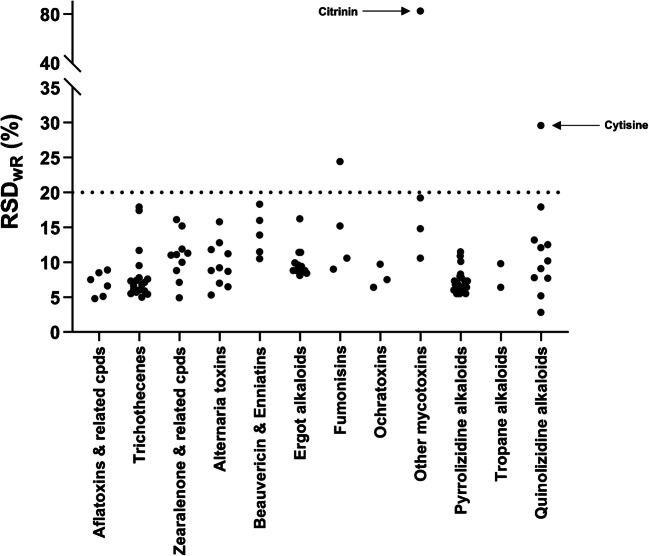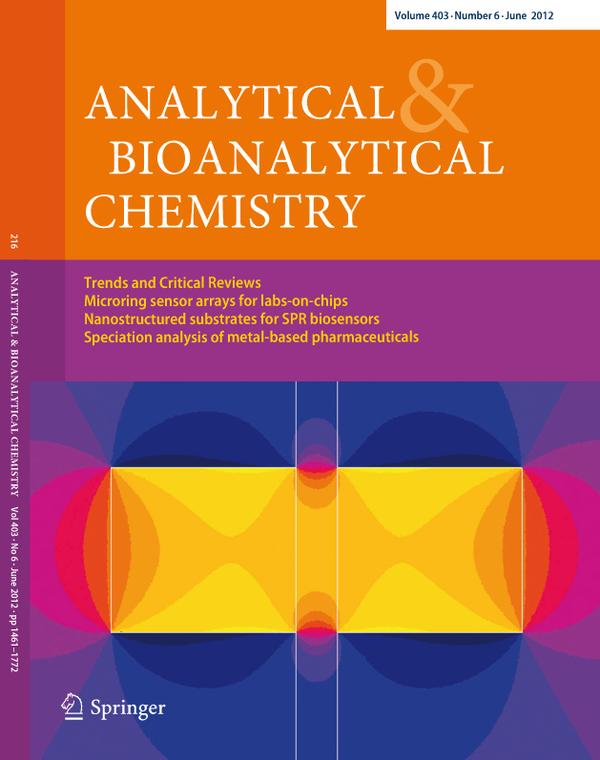A validated LC–MS/MS multi-method for the determination of 110 mycotoxins and plant toxins in cow milk and application to samples from Germany
Abstract
Milk is widely consumed across all ages and is essential for dairy production. Milk quality and safety are largely influenced by the animal’s diet, which may contain feedborne contaminants. This can lead to multi-toxin exposure, potentially transferring toxins to milk and posing health risks to consumers. Currently, only aflatoxin M1 (AFM1) is regulated by the European Union in milk (maximum level (ML) = 0.05 µg/kg) but the (co-)occurrence of other toxins should also be investigated. In this work, a QuEChERS-based LC–MS/MS multi-method for the simultaneous determination of 72 mycotoxins and 38 plant toxins in raw cow milk was developed and validated according to the latest EU regulations. The method showed excellent recoveries (87% of the analytes have average recoveries within 70–120%) and precision (97% of the analytes have within-laboratory reproducibility ≤20%). Limit of quantification (LOQ) for AFM1 (0.0035 µg/kg) was ≤½ ML. The method was applied to 20 milk samples (15 conventional and 5 organic samples) from retail stores and local farms. The analysis of these milk samples showed the co-occurrence of the emerging mycotoxins beauvericin and enniatin B as well as the quinolizidine alkaloids (QAs) lupanine and 13a-hydroxylupanine in the majority of samples. The pyrrolizidine alkaloid senkirkine was also detected in almost half of the samples. The results revealed generally trace levels of mycotoxins and plant toxins. However, QAs (especially lupanine) were detected at much higher concentration levels than other toxin groups (especially in organic milk samples). The findings showed the co-occurrence of multiple toxins in the range of 2–12 toxins in every sample.
Graphical Abstract




 求助内容:
求助内容: 应助结果提醒方式:
应助结果提醒方式:


